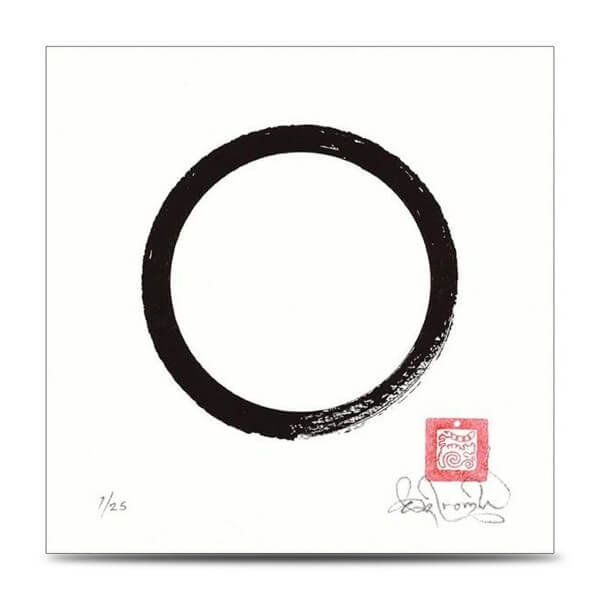
I recently wrote “Slow Motion Multitasking“, musing on the value of slowly moving between tasks and projects.
Today a simpler thought around our choices around pace in this so, so fast moving world we live in, about the power of going slowly.
I sense, from inspiration within my own life’s journey at this time, I shall come back to the theme of going slowly often.
One measure of knowing that you wish to create something truly worthwhile is when you consciously hoose to honour it by going slowly. There is such great power in going slowly.
For today, and going slowly in developing this theme today an in upcoming articles, I begin by choosing to simply share an extensive excpert from a post from my friend and collaborator Alan Moore. This article speaks to how, by taking time and going slowly, craft of great beauty can be created.
TASHI MANNOX, HOW STILLNESS ENHANCES CREATIVITY
(full article posted at Alan’s site, Beautiful Business)
Tashi Mannox had become a Tibetan monk at the age of 22, spending 17 years in Tibetan monasteries. He started his apprenticeship as a temple decorator, learning how to turn a temple into a sacred place and then as a calligrapher of ancient Tibetan Buddhist mantras, texts and philosophies. Derived from the Greek ‘kallos’, meaning beauty, and ‘graphein’ meaning to write, calligraphy literally translated means, beautiful writing.
Tashi’s journey begins by spending decades painstakingly hand drawing Buddhist texts. Tashi came to understand that if he was carrying any emotion inside himself it would inevitably flow through his hand and into his work. Some of these works would take an entire year to complete so consistency was critical.

When a student draws an Enso for his master, a Japanese circle made in one movement of inked brush onto paper, the Zen master can tell the complete state of mind of the pupil. The formation of characters on the paper is directly related to the artist’s mind. It is the state of mind, body and soul that dictates your capacity to create.
To attain this consistency, Tashi learnt he had to bring great stillness into his work, allowing his hand to move freely with precision. He achieved this through meditative practice to bring commitment and total focus to the job in hand. “It is commitment and total focus”, says Tashi, “that sets you free”.
A few months later, we are sitting outside Tashi’s beautiful home near Hay-on-Wye, looking at the vista of Hay Bluff as the sun shines. We are absorbed with the view, chatting about the Tibetan way of life. So what happens to these ancient cultures, ideas and beliefs in a modern world of change?
“My purpose,” Tashi says, “is to hold and protect the language of the Tibetan religion and faith because it has been developed over 1500 years — providing nourishment for all humanity. It’s precious because it is an ancient tradition. So, the need to preserve it becomes paramount”.
As a young man his great fortune was being nurtured and tutored by the old Lamas of great faith and wisdom. He was the first, almost, Westerner to become a Tibetan monk in Tibet. He was afforded the rarest gift — an opportunity to access a direct line to 1000 years of unbroken wisdom that was purely dedicated to living a peaceful spiritual life.
A year before Tashi left the monastery he was in London the first time in 16 years. In his robes walking through Soho in London the day after the bombing of a gay pub. Where many died, or, were injured, Tashi instinctively felt the call to sit down in front of the bombed building and meditate. Over a number of hours he was joined by a trickle of people, until, they became a large diverse collection of humanity. Collectively enacting a compassionate response to a scene of great violence. For many it was an unexpected act of healing.
Tashi, describes it as a pivotal moment to see beyond the sacred temples of Tibetan monasteries to how his work as a monk and calligrapher could be used in contemporary life. We go further, exploring the question of love and belonging. Tashi’s observation is that in the modern world many are profoundly lonely and quest for belonging. Noisy ghosts in the machine called life. Tibetan Buddhist culture and philosophy is a spiritual tradition its calligraphy plays a venerated role in spiritual awakening. It links a thousand years of wisdom to today’s world. These ancient mantras and philosophies are at the heart of the Tibetan culture. The most sacred from of speech is mantra, representing the ultimate or divine, through the quality of sound it produces but also through its physical form. Mantra practice is described as both liberation through hearing and liberation through seeing.
It is these mantra’s which Tashi so lovingly renders into life with a pen and a brush, clearly resonate deeply within him.
In short, Tibetan calligraphy is the means to open the mind, which lives in the body. To spend one, two maybe many more hours reflecting on compassion, empathy, impermanence, the connectedness of everything.
The practice helps people consider the possibility of bringing greater stillness into their lives. “In that way we can act in more compassionate ways to all that surrounds us’, explains Tashi. “It is about releasing people’s true potential”. Tashi is motivated by a simple wish that if he can provide the means by which someone can see the world and embrace it in a different nourishing way, then he has done his job.
Calligraphy practiced in the Islamic culture for millennia, it is a form of refined creativity. Tashi shared the work from the Sharjah Calligraphy Biennial in the Arab Emirates in which he was one of the few Westerners to be invited, certainly the only Tibetan calligrapher whose work was judged to be good enough to rest alongside the work of some extraordinary artists.
The Biennial is a cultural celebration of spiritual faith — but it equally invites diversity of belief, faith and cultures. Tashi’s work is also displayed in the Moscow Museum of Calligraphy founded in 2005, which in many ways reestablished a conversation about the cultural value of calligraphy. And what about creative process? “The process of creation can take years at times”, he reflects. “The challenge is to get it out, to challenge which is limitless, to then use the tools available to me to the very best of my ability to create a window into what I see and feel”. Judged purely in terms of craft, Tashi is recognised internationally. On his kitchen table I spy a personal note from the Dalai Lama who writes:
With its exquisite calligraphy and magnificent photographs of Buddhist imagery, Sacred Scripts presents the refined and varied artistry of Tibetan calligraphers and artists of the past. The work portrayed in this fine volume reflects the great heights of aesthetic achievement attained by master artisans who considered their accomplishments to be offerings to the Buddha, Dharma and Sangha.
Tibetan culture is about values. Tashi tells me, as the light fades to dusk, that all life is precious. To believe this and embrace this idea changes the way you behave, the actions you take. If these are the beliefs you hold, you become a navigator of life in a better way.
In a world where ugly has become the everyday language of politics, economics, business, beauty is wanted. The healing words and beliefs of cultures that guide us to be more compassionate, loving, generous, and kind. Beauty can be manifest in many forms, it is universal, transformational, restorative. It is beauty that lends things their immortality.
And it is this universal view of the world that so preoccupies this man, who says, “everybody wants to be happy, everybody wants to be free. But how to be happy and how to be free is the biggest challenge”.
